Can Culleretes: A Culinary Journey Through Time
Friday, April 25, 2025
In the vibrant, winding streets of Barcelona's Gothic Quarter, there stands a culinary institution that has weathered the storms of history and emerged as a beloved testament to Catalan cuisine. Can Culleretes, proudly holding the title of Barcelona's oldest restaurant, has been serving up delectable dishes and unforgettable experiences since 1786. This venerable establishment is not just a place to eat; it's a living museum of gastronomy, culture, and tradition.
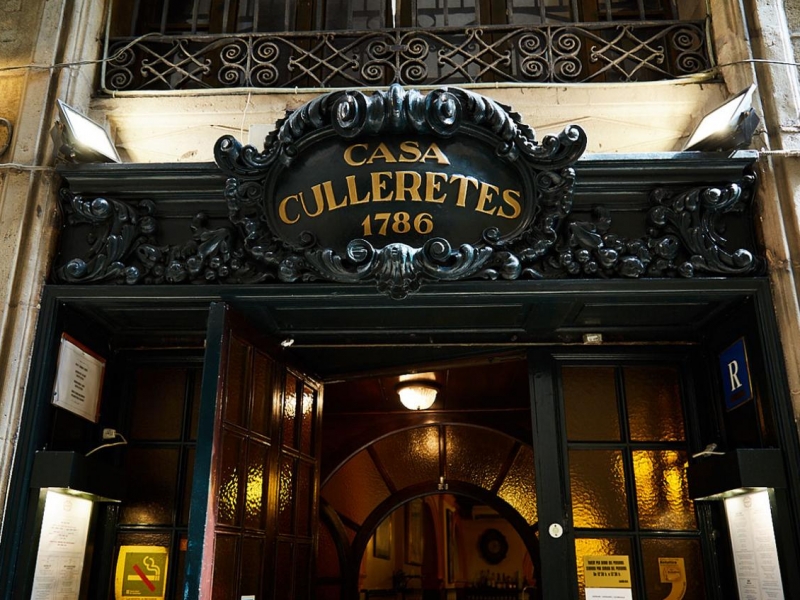
As you approach Can Culleretes, you're immediately struck by its understated exterior, which belies the treasure trove of culinary delights and historical charm that await inside. Push open the door, and you'll find yourself transported to another era. The interior of Can Culleretes is a captivating blend of old-world charm and timeless elegance, reflecting its impressive 235-year history.
Your eyes are drawn to the faded murals that adorn the walls, each telling a silent story of the countless patrons who have dined here over the centuries. Bright Portuguese-style tiles add splashes of colour and character, their intricate patterns a testament to the artisanal craftsmanship of bygone days. As you're led to your table, you might catch glimpses of signed portraits of famous guests who have graced these halls – a veritable who's who of Barcelona's cultural elite through the ages.
While the decor might catch your eye, it's the menu that truly captures the essence of Can Culleretes. This is not just a restaurant; it's a custodian of Catalan culinary traditions, with dishes that have been perfected over generations. The menu is a delightful mix of time-honoured classics and innovative creations, all rooted firmly in the rich gastronomic heritage of Catalonia.
.png)
Ask any Barcelona native about Can Culleretes, and they're likely to mention one dish in particular: canelons. This beloved pasta dish is perhaps the most iconic item on the menu, a perfect example of the longstanding culinary exchange between Catalonia and Italy.
The history of canelons in Catalonia is fascinating. Trade with Italy and a later influx of Italian labourers led to a culinary cross-pollination that gave birth to this uniquely Catalan take on the Italian cannelloni. Over time, canelons became deeply ingrained in Catalan culture, evolving into a cherished Christmas dish typically made with leftover meats.

At Can Culleretes, the canelons take centre stage. Long pasta tubes, lovingly stuffed with a savoury mixture of veal and pork. This hearty filling is then enveloped in a velvety béchamel sauce, generously seasoned with aromatic nutmeg. The coup de grâce? A layer of Emmental cheese, melted to perfection and sporting a pleasantly charred top that adds a subtle smoky flavour to each bite.
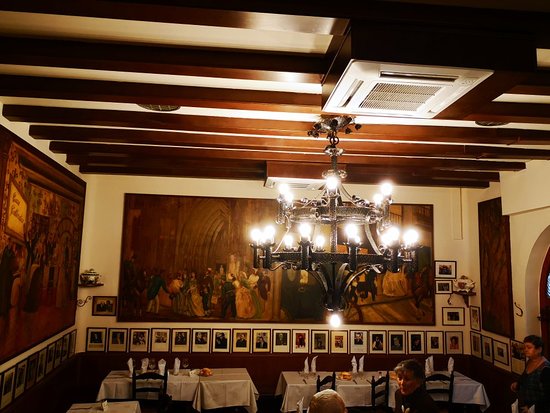
This isn't just any pasta dish; it's a culinary phenomenon. Introduced to the restaurant's menu in the 1950s, canelons quickly became a favourite among patrons. Today, it reigns supreme as the best-selling item, with up to 300 portions flying out of the kitchen on a busy Sunday. It's a testament to the enduring appeal of this simple yet sophisticated dish.
While canelons might be the star of the show, Can Culleretes has another ace up its sleeve when it comes to festive fare: escudella. This hearty soup is a Christmas Day tradition in Catalonia, and Can Culleretes' version is renowned throughout Barcelona.
Escudella is a dish that truly embodies the spirit of Catalan cuisine – robust, comforting, and brimming with flavour. The foundation of this soup is a rich ham bone broth, simmered to perfection to extract every last bit of flavour. To this flavourful base, the chefs at Can Culleretes add an array of ingredients that turn the soup into a meal in itself.
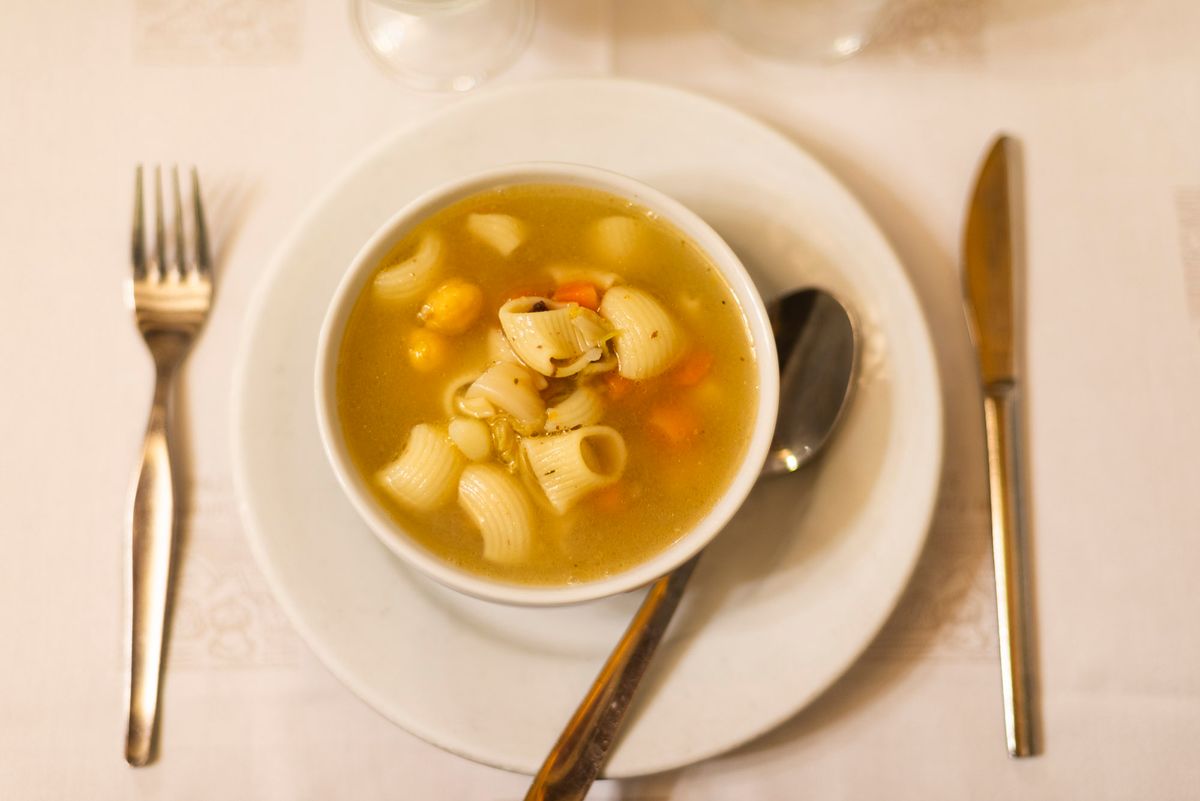
First come the galets – snail-shaped pasta that's a signature element of escudella. These pasta shells are perfect for catching and holding the delicious broth. Next, a medley of meats is added – perhaps tender chunks of veal or finely chopped butifarra sausage, a Catalan speciality. The soup is then bulked out with hearty vegetables: garbanzo beans for protein, carrots for sweetness, potatoes for substance, and cabbage for a touch of green.
The result is a warming, satisfying dish that's perfect for cold winter days and festive celebrations alike. It's little wonder that escudella has become a beloved tradition at Can Culleretes, drawing families and friends to share in this communal dining experience year after year.
While canelons and escudella might be the headliners, the supporting cast on Can Culleretes' menu is equally impressive. The restaurant prides itself on serving a wide array of traditional Catalan dishes, each prepared with the same care and attention to detail as their more famous counterparts.

One of the hallmarks of Catalan cuisine is the inspired combination of fruit and meat, a culinary tradition that Can Culleretes embraces wholeheartedly. Take, for instance, the ànec guisat amb prunes – a mouthwatering dish of duck braised with prunes. This dish exemplifies the Catalan knack for balancing flavours, with the rich, savoury duck complemented perfectly by the sweet, tangy prunes.
For those with a sweet tooth, Can Culleretes offers a classic Catalan dessert: mel i mató. This simple yet elegant dish consists of mató, a local cottage cheese, drizzled with golden honey and topped with crunchy walnuts. It's a perfect end to a meal, light enough not to overwhelm but satisfying enough to round off the dining experience on a high note.
Dining at Can Culleretes is more than just a meal; it's an experience that engages all the senses. The sights of the historic interior, the sounds of convivial chatter and clinking cutlery, the smells wafting from the kitchen, the textures of the lovingly prepared dishes, and of course, the tastes of centuries of culinary tradition – all combine to create a truly memorable event.
For those looking to sample a variety of Can Culleretes' offerings, the restaurant's set menus are an excellent choice. These range from a tapas spread perfect for sharing and grazing to a seafood-centric feast that showcases the bounty of the nearby Mediterranean. These set menus offer excellent value for money, allowing diners to experience a broad spectrum of flavours and dishes without breaking the bank.
It's worth noting that Can Culleretes' popularity means that reservations are essential. The restaurant's reputation, combined with its historic significance and the quality of its food, ensures that tables are in high demand. Planning ahead and booking in advance is the best way to guarantee your spot in this culinary time capsule.
Can Culleretes is more than just a place to eat; it's a living, breathing piece of Barcelona's history. Its longevity is a testament not only to the quality of its food but also to its ability to adapt and evolve while staying true to its roots. It has survived wars, economic upheavals, and changing food trends, emerging stronger and more beloved with each passing year.
The restaurant serves as a bridge between past and present, allowing diners to experience traditional Catalan cuisine in much the same way as their ancestors might have. It's a place where food is not just sustenance, but a celebration of culture, history, and community.
So, the next time you find yourself in Barcelona, why not step off the beaten path of tourist traps and trendy eateries? Instead, make your way to the Gothic Quarter and push open the door of Can Culleretes. Take a seat, peruse the menu, and prepare to embark on a culinary journey through time. Whether you opt for the iconic canelons, the festive escudella, or any of the other traditional dishes on offer, you're sure to leave with a full stomach, a happy heart, and a newfound appreciation for the rich Catalan cuisine.
 2
Like
Published at 9:29 PM Comments (0)
2
Like
Published at 9:29 PM Comments (0)
Migas Extremeñas: A Taste of Spanish Tradition
Friday, April 18, 2025
In Spanish cuisine, few dishes embody the rustic charm and hearty flavours quite like Migas Extremeñas. This beloved traditional dish, hailing from the Extremadura region of Spain, is a testament to the ingenuity of Spanish cooks who could transform humble ingredients into a meal fit for kings. Today, we'll delve into the world of Migas Extremeñas, exploring its history, preparation, and cultural significance.

Migas, which literally translates to "crumbs" in English, is a dish that originated as a way to use up stale bread, a common staple in Spanish households. While variations of migas can be found across Spain, from Aragón to Andalucía and the two Castillas, the Extremeñan version has its own unique characteristics that set it apart.
The origins of migas can be traced back to the shepherds and farmworkers of rural Spain. These hardworking individuals needed a filling, energy-packed meal to sustain them through long days in the fields or tending to their flocks. Migas provided just that – a simple yet satisfying dish that could be prepared with readily available ingredients.
At its core, Migas Extremeñas is a dish centred around bread. However, it's not just any bread that will do. The key to perfect migas lies in using a compact loaf with plenty of crumb, aged for at least 2-3 days to ensure it's sufficiently dry and hard. This seemingly unappetising starting point is the foundation for a dish that will surprise and delight your taste buds.
Ingredients (for 2 servings):
150g of stale bread
85ml of water
1/2 teaspoon of salt
4 garlic cloves
1/2 green bell pepper
100g fresh pork belly (pancetta)
30g olive oil
1 teaspoon sweet paprika
The Process
Preparing the Bread: The first step in creating Migas Extremeñas is to cut the stale bread into tiny cubes, roughly the size of chickpeas. These small bread pieces are then placed in a bowl and moistened with water seasoned with salt. This mixture is then covered with a cloth and left to rest for at least two hours, allowing the bread to absorb the water and soften slightly.
Preparing the Accompaniments: While the bread is resting, prepare the other ingredients. The garlic cloves are crushed (with their skins left on), the green bell pepper is finely sliced, and the pork belly is cut into thin strips. These elements will add depth of flavour and textural contrast to the finished dish.
Cooking the Vegetables and Meat: The cooking process begins by heating some olive oil in a cazuela (a traditional Spanish earthenware cooking pot) over medium-high heat. The green pepper strips are fried first until they turn golden, then set aside. Next, the pork belly is fried until crispy and golden, and then it is also reserved to one side.
Creating the Flavour Base: More olive oil is added to the cazuela, and the crushed garlic cloves are fried until golden. At this point, sweet paprika is quickly stirred in, careful not to let it burn, as this would impart a bitter taste to the dish.
Cooking the Migas: The moistened bread cubes are now added to the cazuela. This is where patience becomes a virtue. The bread must be constantly stirred and cooked for 15-20 minutes until it becomes dry, crispy, and golden. This process requires attention and care to ensure the migas don't stick together or burn.
The Final Touch: Once the migas have reached the perfect texture, the reserved green pepper and pork belly are added back to the cazuela and mixed thoroughly with the bread.
Serving: Migas Extremeñas are best served immediately while still hot and crispy.
Migas Extremeñas is more than just a dish; it's a cultural icon that represents the resourcefulness and creativity of Spanish cooking. It exemplifies the Spanish approach to cuisine, where simple, locally available ingredients are transformed into something truly special through technique and patience.
Variations and Accompaniments
.jpg)
While this recipe focuses on a version with green pepper and pork belly, there are countless variations of Migas Extremeñas. Some cooks might add red pepper for a splash of colour, or substitute the pork belly with chorizo for a spicier kick. Some versions even include both, creating a more complex flavour profile.
Migas can be served on their own as a hearty breakfast or lunch, but they are often accompanied by other dishes to create a more substantial meal. Common accompaniments include:
Fried eggs: The rich, runny yolk provides a delicious contrast to the crispy migas.
Grapes or melon: The sweetness and juiciness of fruit offer a refreshing counterpoint to the savoury migas.
Sardines or other small fish: Adding a protein element and a taste of the sea.
A simple green salad: To add freshness and balance to the meal.
While Migas Extremeñas might not be the first dish that comes to mind when thinking of healthy food, it does have some nutritional merits. The bread provides complex carbohydrates for sustained energy, while the olive oil offers healthy fats. The addition of vegetables like green pepper increases the fibre and vitamin content.
However, it's worth noting that this is a calorie-dense dish, with each serving containing approximately 570 calories. As with many traditional dishes, it's best enjoyed in moderation as part of a balanced diet.
In an era of fast food and instant gratification, dishes like Migas Extremeñas serve as a reminder of the value of slow cooking and traditional methods. The time and effort required to prepare this dish encourage us to slow down, to be present in the cooking process, and to appreciate the transformation of simple ingredients into something spectacular.
Migas Extremeñas is more than just a recipe; it's a journey through Spanish history and culture. From its humble origins as a shepherd's meal to its current status as a beloved traditional dish, migas tells a story of resourcefulness, patience, and the magic that can happen in the kitchen when simple ingredients are treated with respect and care.
Whether you're a seasoned cook looking to explore Spanish cuisine or a food enthusiast eager to taste the flavours of Extremadura, preparing Migas Extremeñas is an adventure worth embarking upon. So gather your ingredients, summon your patience, and prepare to create a dish that has delighted Spanish palates for generations. Who knows? You might just find that these little "crumbs" become a new favourite in your culinary repertoire.
 3
Like
Published at 7:26 PM Comments (0)
3
Like
Published at 7:26 PM Comments (0)
Heavenly Bread - Panquemao
Saturday, April 5, 2025
Imagine biting into a perfectly golden, slightly sweet bread with a crisp exterior and a soft, fluffy interior. This delicious treat is none other than panquemao, also known as 'pan quemado' or toña, a traditional Spanish Easter bread that has been delighting taste buds for generations.

Panquemao, which translates to "burnt bread" in English, is a misleading name for this delightful pastry. Far from being burnt, it's a beautifully golden-brown sweet bread that's particularly popular in the Valencia region of Spain. The name actually comes from its deeply caramelised crust, which gives way to a soft, white, and spongy interior.
This Easter treat shares many similarities with the more widely known mona de pascua, another Spanish Easter cake. However, the key difference lies in the baking process, which gives panquemao its distinctive appearance and texture.
Like many traditional foods, panquemao is deeply rooted in Spanish culture, particularly in the Easter celebrations of the Valencia region. It's not just a bread; it's a symbol of togetherness, family, and the joy of the Easter season.
Typically, panquemao is enjoyed as an afternoon snack or merienda, often accompanied by a steaming cup of hot chocolate. This pairing creates a comforting and indulgent treat that's perfect for sharing with loved ones during the Easter period.
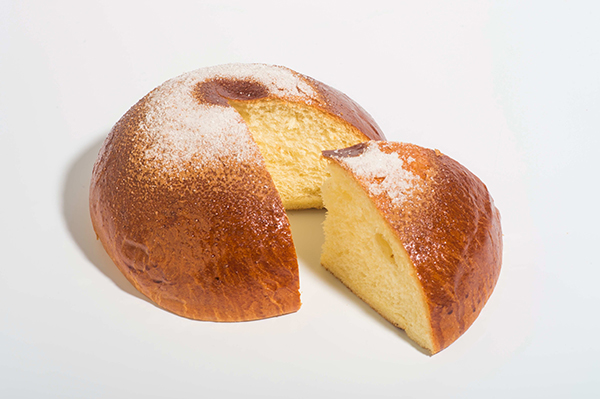
Ingredients:
To create this heavenly bread, you'll need the following ingredients (this recipe serves 8):
15g fresh yeast
50g lukewarm milk
250g strong flour
2 medium eggs
90g white sugar (60g for the dough, 30g for sprinkling)
40g butter at room temperature
A pinch of salt
Zest of half a lemon
1 beaten egg for brushing
These simple ingredients come together to create a bread that's greater than the sum of its parts. The strong flour provides structure, while the eggs and butter contribute to the rich flavour and tender crumb. The lemon zest adds a subtle citrus note that brightens the overall flavour profile.
Creating the perfect panquemao is a labour of love that requires patience and attention to detail. Here's a step-by-step guide to making this delightful bread:
- Begin by mixing the fresh yeast with the lukewarm milk. This step activates the yeast, preparing it to work its magic on the dough.
- In a large mixing bowl or stand mixer, combine the yeast mixture with the strong flour, eggs, 60g of white sugar, butter, salt, and lemon zest. Knead this mixture for about 20 minutes until you have a smooth, elastic, and homogeneous dough. Don't be tempted to add more flour if the dough seems sticky – it will come together beautifully as it rests.
- Shape the dough into a ball and place it in a greased bowl. Cover with cling film or a clean kitchen towel and let it rise until it doubles in volume.
- Once the dough has doubled, gently deflate it by pressing out the air.
- Reshape the dough into a tight ball. This step is crucial for achieving the characteristic shape of panquemao.
- Allow the shaped dough to rise again until it doubles in size. This second rise can take anywhere from 30 minutes to an hour, depending on the ambient temperature.
- Preheat your oven to 220°C (428°F) with heat from both top and bottom.
- Place the risen dough in the preheated oven and bake for 5 minutes. This initial high-heat bake helps to set the structure of the bread.
- Remove the bread from the oven and reduce the temperature to 180°C (356°F).
- Brush the partially baked bread with beaten egg and sprinkle with the remaining 30g of sugar. This step is what gives panquemao its characteristic golden, slightly crunchy crust.
- Return the bread to the oven and bake for an additional 20 minutes, or until it's beautifully golden brown.
- Allow the panquemao to cool completely before slicing and serving.
The Science Behind the Perfect Panquemao
The process of making panquemao involves some fascinating food science. The initial high-temperature bake causes the water in the dough to turn to steam rapidly, which helps the bread to rise quickly and develop a crisp crust. This is known as "oven spring" in baking terms.
The egg wash and sugar sprinkle applied halfway through baking serve multiple purposes. The egg provides proteins and fats that brown beautifully in the heat of the oven, contributing to the golden colour. The sugar caramelises, adding both colour and flavour to the crust.
The two-stage baking process – starting hot and then reducing the temperature – allows for this perfect balance of a crisp, caramelised exterior and a soft, tender interior.
While panquemao is delicious on its own, there are many ways to enjoy this versatile bread:
Traditional: Serve slices of panquemao with a cup of rich, dark hot chocolate. The contrast between the sweet bread and the slightly bitter chocolate is divine.
Savoury Twist: Try serving panquemao with hard-boiled eggs or dry-cured meats like 'longaniza de pascua'. The sweetness of the bread pairs surprisingly well with these savoury elements.
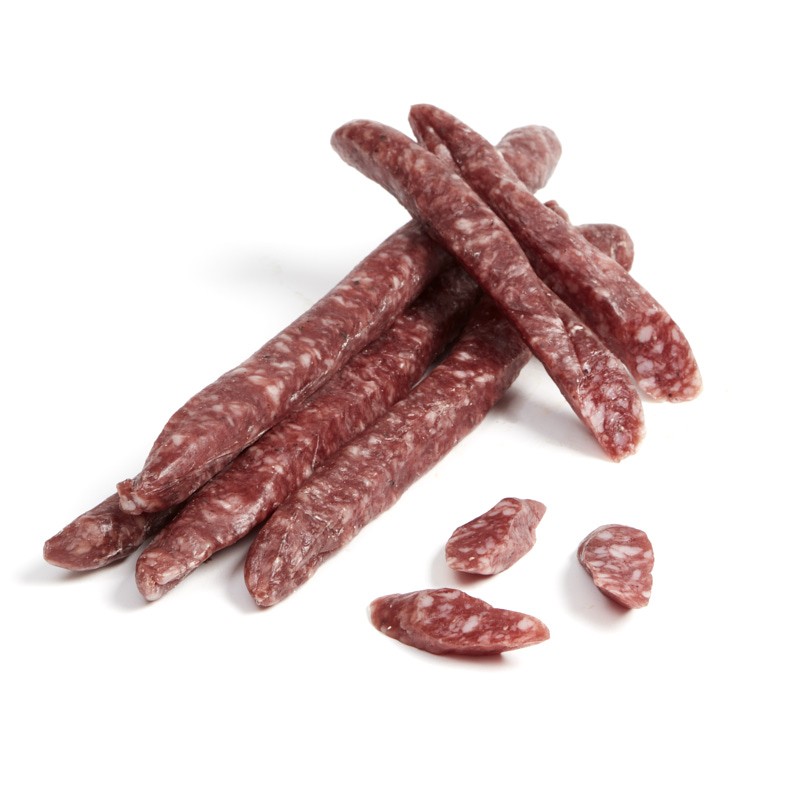
Breakfast: Toast slices of Panquemao and spread with butter and jam for a decadent breakfast treat.
Dessert: Use panquemao as a base for a bread pudding or trifle for a unique twist on classic desserts.
Gift: Panquemao makes for a thoughtful homemade gift during the Easter season. Wrap a loaf in decorative paper and present it to friends or family.
Preserving Your Panquemao
If you find yourself with leftover panquemao (although this is rarely a problem!), you can store it in an airtight container at room temperature for 2-3 days. For longer storage, you can freeze slices of panquemao for up to 3 months. Simply thaw and toast when you're ready to enjoy.
So why not try your hand at making this Spanish delicacy? With a bit of patience and care, you can create a panquemao that rivals those found in the best bakeries of Valencia. And as you bite into that perfectly golden crust and soft, fluffy interior, you'll understand why this humble bread has been cherished for generations. ¡Buen provecho!
 0
Like
Published at 12:21 AM Comments (1)
0
Like
Published at 12:21 AM Comments (1)
Spam post or Abuse? Please let us know
|
|